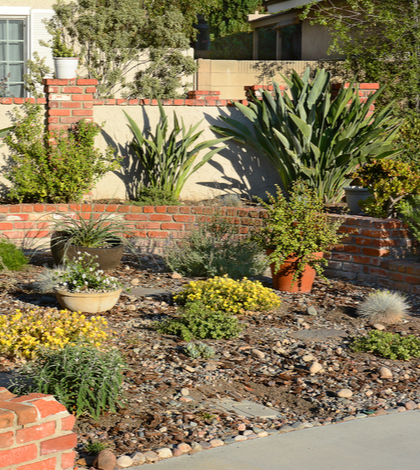A new pilot program has been launched by numerous organizations in Southern California to aid residents in selecting more native plants for their homes and gardens to become even more water-efficient. Metropolitan Water District (MWD) of Southern California and local water agencies have teamed up with the California Native Plant Society (CNPS) to boost the number and variety of native plants offered at local nurseries.
“We want to make it as simple as possible for Californians who are committed to sustainability to grow a beautiful garden of native plants. Having native plants with plant-specific information when they need it, where they need it – at the nursery – will be a big help,” said Joone Lopez, general manager of Moulton Niguel Water District, which helped initiate the program with support from WaterNow Alliance.
Native plants at the participating nurseries will be clearly identified and educational materials will be available for consumers to take home. Additionally, staff at participating nurseries will receive training on the proper care, maintenance, watering and planting of California native plants. The free staff training qualifies for continuing education and professional certification credits. Participating nurseries will become part of a native plant directory at: https://calscape.org/.
“Southern California residents have made tremendous strides to increase their long-term water efficiency to respond to our changing climate, including choosing sustainable gardens over thirsty grass,” said MWD General Manager Jeffrey Kightlinger. “But they sometimes face hurdles finding native plants in their local nurseries and knowing about how to take care of them, including how much less water they need. This program will help remove those hurdles.”
According to a nine-year case study conducted by the city of Santa Monica, native plants typically use about 83 percent less water, produce about 56 percent less green waste and require nearly 70 percent less maintenance. California’s recent multi-year drought followed by massive flooding is testimony to the need for the state’s residents to invest in drought-tolerant yards with adequate drainage to handle potential flooding.
To date, the pilot program is available at 60 nurseries in Orange County and Long Beach, and the program continues to gain interest from surrounding communities. However, the information regarding California native plants – and valuable information on topics including plant description, wildlife (and insects) supported by a specific plant, landscaping information and natural setting – is available to anyone at: https://calscape.org/.
“Beyond these sustainability benefits, native gardens are just beautiful,” said Dan Gluesenkamp, executive director of the CNPS. “Through this program we’ve curated a really special list of plants that you’ll be able to find at local nurseries. The variety of colors, textures, smells and shapes will bring the beauty of California to your own front yard.”
Californians are increasingly aware of the essential role native plants play in the ecosystem, attracting and helping sustain wildlife and pollinators such as bees and butterflies, whose populations are diminishing, according to the CNPS. Program partner, Municipal Water District of Orange County, will be monitoring its success of the new pilot program to determine whether to expand it to other communities.
While interest in native plants has grown significantly over the past few years, a 2018 survey of the American Society of Landscape Architects expects native plants to be the most requested type of outdoor project this year. The California Native Plant Society is keenly aware of the growing interest in California’s native plants — since 2016, traffic to the organization’s website, https://calscape.org/ has increased by more than 250 percent.
 California Water News Daily Your Source For Water News in California
California Water News Daily Your Source For Water News in California


